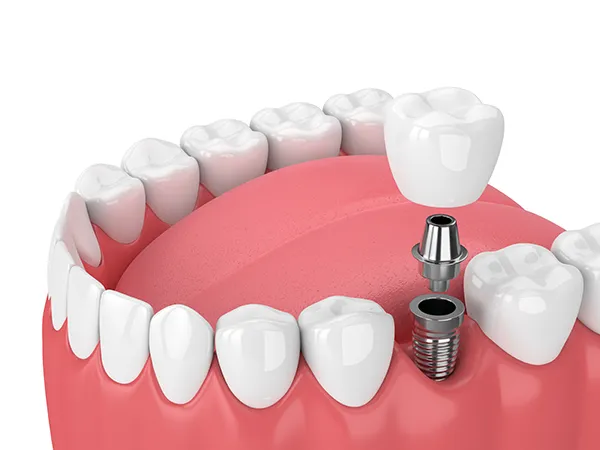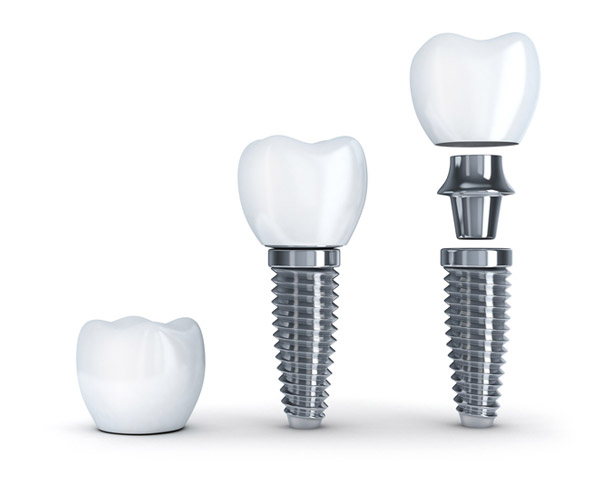Dental Implants Overview Dental Implants OverviewAt Chicago Oral Surgery and Implant Center our board-certified oral surgeons are able to provide you with options to replace missing or damaged teeth. Using the most recent advances in dental implant technology, Dr. Ledger and Dr. Lee are able to place long-lasting implants with precision to restore the tooth functionality and leave you with a more confident smile. What are dental implants?Dental implants are the premium choice for obtaining a comfortable and long-term solution for missing or failing teeth. Dental implants are technologically advanced artificial structures that replace missing teeth. They are made up of three parts which include the implant, healing abutment and the crown, otherwise known at the replacement tooth created by your dentist. Working together, these three pieces create a secure base for your new tooth. Our surgeons will work in tandem with your dentist to complete this procedure. The dental implant, which lives beneath the gum, will be placed by our surgeons, while the prosthetic tooth, which sits on top, is completed by your dentist. As a result, dental implants look, feel, and function, like natural teeth, making them the gold standard for tooth replacement. Benefits of Dental Implants
 Treatment TimelineIt is important to note that dental implant and tooth restoration can take several months to a year, depending on your specific case, to ensure enough time for healing and the growth of new bone. Below is a rough timeline and steps that will help you prepare for your new smile. Step One: ConsultationAt your consultation our doctors will learn more about your goals, review your medical history, perform a comprehensive exam and review your imaging. Additionally, your doctor will discuss anesthesia options include local anesthesia, nitrous oxide, sedation, or general anesthesia. You will leave this appointment with clear preoperative and postoperative instructions. Step Two: ProcedureA tooth extraction and/or bone graft may be necessary prior to implant placement. When it is time for dental implant placement, your surgeon will make a small incision in the gum to expose the jawbone, then drill a hole using a special tool, and precisely screw the implant into the jawbone until it is secure. Ultimately, once the implant is placed, it is left undisturbed and without the restoration (ie tooth replacement) for several months. Step Three: OsseointegrationOnce the dental implant is placed, the next 2-6 months involve healing and osseointegration. Osteointegration is a process where the implant fuses to the bone, allowing it to support the restoration. Step Four: Return for Final CheckDuring this visit, a small x-ray is taken to ensure the implant has integrated (fused to the bone). Your surgeon will then instruct you to return to your dentist for the final restoration. Throughout and after this process our surgeons will communicate closely with your referring dentist. From here, your dental implant procedure will be complete and you can enjoy your new smile. If you are interested in getting dental implants please contact Chicago Oral Surgery and Implant Center at (312) 620-1926 today to schedule a consultation appointment. |
Anesthesia options available: Local AnesthesiaLocal anesthesia is commonly used for minor procedures and provides numbness in a targeted area. The patient remains awake and the feelings of discomfort are eliminated.  Nitrous OxideNitrous oxide, commonly known as laughing gas, is a mild sedative that the patient inhales to reduce anxiety. Used in conjunction with local anesthesia, it does not cause the patient to lose consciousness.  IV sedationIV sedation is commonly used for more complex surgical procedures or for patients with high dental anxiety. This type of anesthesia, administered through the vein, induces a state of unconsciousness. The patient is unaware of the procedure being performed. |